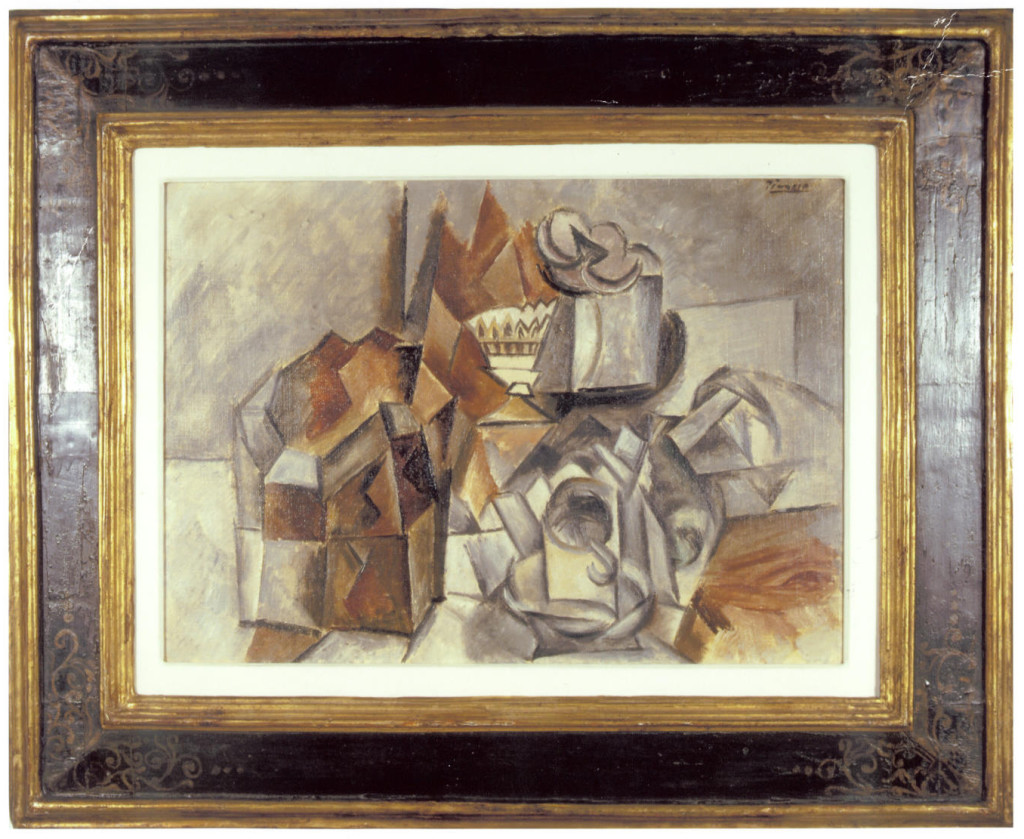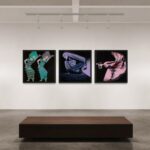The Dandy and the Pilfered Picasso
Article by Reed V. Horth, for ROBIN RILE FINE ART
Washington, DC- June 24, 2013- The Department of Justice today restrained the 1909 Pablo Picasso painting “Compotier et tasse” – estimated to be worth $11.5 million – on behalf of the Italian government. This action follows an investigation by U.S. Immigration and Customs Enforcement’s (ICE) Homeland Security Investigations (HSI). The restraining order was obtained in response to an official request by the government of Italy, pursuant to the Treaty between the United States and the Italian Republic on Mutual Legal Assistance in criminal matters for assistance in connection with its ongoing criminal investigation and prosecution of Gabriella Amati. Amati and her late husband, Angelo Maj, were charged by the Italian Public Prosecutors’ Office in Milan with embezzlement and fraudulent bankruptcy offenses under Italian law, and Italian prosecutors have obtained a restraining order for the Picasso painting in connection with the criminal proceeding.
The dapper young gentleman had just recently embarked on a career in fine art-sales when sent me a short email after a successful meeting we held in the midst of Art Basel Miami Beach in December 2011. He thanked me for my time and mentioned that things were brewing that would be both profitable and fun for us both. During our December meeting, the dandy gentleman wore an impeccable pin-striped suit and spoke elegantly about his European travels, his fledgling business and his impressive access to high end works of art. What struck me as most impressive, being in the art business for 15 years, was that I scarcely had a tenth of the resources he reported having. He was the picture of what an art dealer should look, sound like and exude. That evening filled with wine, food and revelry, my wife and I casually discussed our business and our high-end clients contemporaneously seeking original works from Spanish Master Pablo Picasso (1881-1973) as well as other 20th Century masters. Art Basel Miami Beach is an incredible feast for the senses, as the finest dealers, most beautiful people and best art in the world commingle in an atmosphere of sophistication, culture and a fair degree of braggadocio. Among other meetings with clients, vendors and friends, the meeting with this young man stood out as being one of the most promising of future business and friendship.
When an email arrived in my inbox early one morning the following February from the same young gentleman, I became excited at the prospect of conducting mutual business based on a small 1909 oil painting by Pablo Picasso entitled, “Compotier et tasse”.
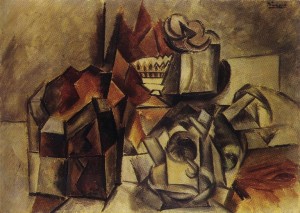 Following my rigorous schedule of questions and due diligence surrounding each work I present to my clients, I forwarded a litany of questions to the young broker on the work’s provenance, certification, location, history and the like. I then conducted some due diligence of my own, first simply through Google, then more sophisticated means. My initial reaction was, at EURO15.2M, it became obvious that pricing was out-of-line with market. This an indicator that there may not be direct access to a given work, but instead a daisy-chain of brokers, each lumping millions of Euros on the total as it progresses through their hands. Unlike the real estate market, art dealers tend to withhold great listings from other brokers as a market inundation can smother an otherwise perfect work. The best listings are handed to only a few, selected private clients and/or their direct agents. This keeps works which are fresh to the market from becoming spoiled, or in parlance “Shopped”. It also keeps pricing to the end-buyer to a minimum. The pricing provided to me indicated that this “shopping” might be the case here. This evidence was further buttressed when he noted that his “partner’s source was direct to mandate”. This told me not only that he was not direct, but there were likely several more egos and pocketbooks between me and this painting than even he might be aware of. These sorts of complications muddy the waters as each broker has specific needs, none of which can be shelved for the good of the deal closing. Beyond this, it also prevents information such as the true origin of the work to be known, thereby jeopardizing each agent in the process should something go awry with the deal. The origin, as it turns out, would have been very relevant information for these brokers to have had.
Following my rigorous schedule of questions and due diligence surrounding each work I present to my clients, I forwarded a litany of questions to the young broker on the work’s provenance, certification, location, history and the like. I then conducted some due diligence of my own, first simply through Google, then more sophisticated means. My initial reaction was, at EURO15.2M, it became obvious that pricing was out-of-line with market. This an indicator that there may not be direct access to a given work, but instead a daisy-chain of brokers, each lumping millions of Euros on the total as it progresses through their hands. Unlike the real estate market, art dealers tend to withhold great listings from other brokers as a market inundation can smother an otherwise perfect work. The best listings are handed to only a few, selected private clients and/or their direct agents. This keeps works which are fresh to the market from becoming spoiled, or in parlance “Shopped”. It also keeps pricing to the end-buyer to a minimum. The pricing provided to me indicated that this “shopping” might be the case here. This evidence was further buttressed when he noted that his “partner’s source was direct to mandate”. This told me not only that he was not direct, but there were likely several more egos and pocketbooks between me and this painting than even he might be aware of. These sorts of complications muddy the waters as each broker has specific needs, none of which can be shelved for the good of the deal closing. Beyond this, it also prevents information such as the true origin of the work to be known, thereby jeopardizing each agent in the process should something go awry with the deal. The origin, as it turns out, would have been very relevant information for these brokers to have had.
For myself, the work presented too many problems and potential questions. Therefore, the brief information was filed away and I demurred to my young friend. “Not for me,” I said. Subsequent failures in providing even the most basic information on other high-end works meant that our friendship was not meant to be. I have not heard from him in the past year.
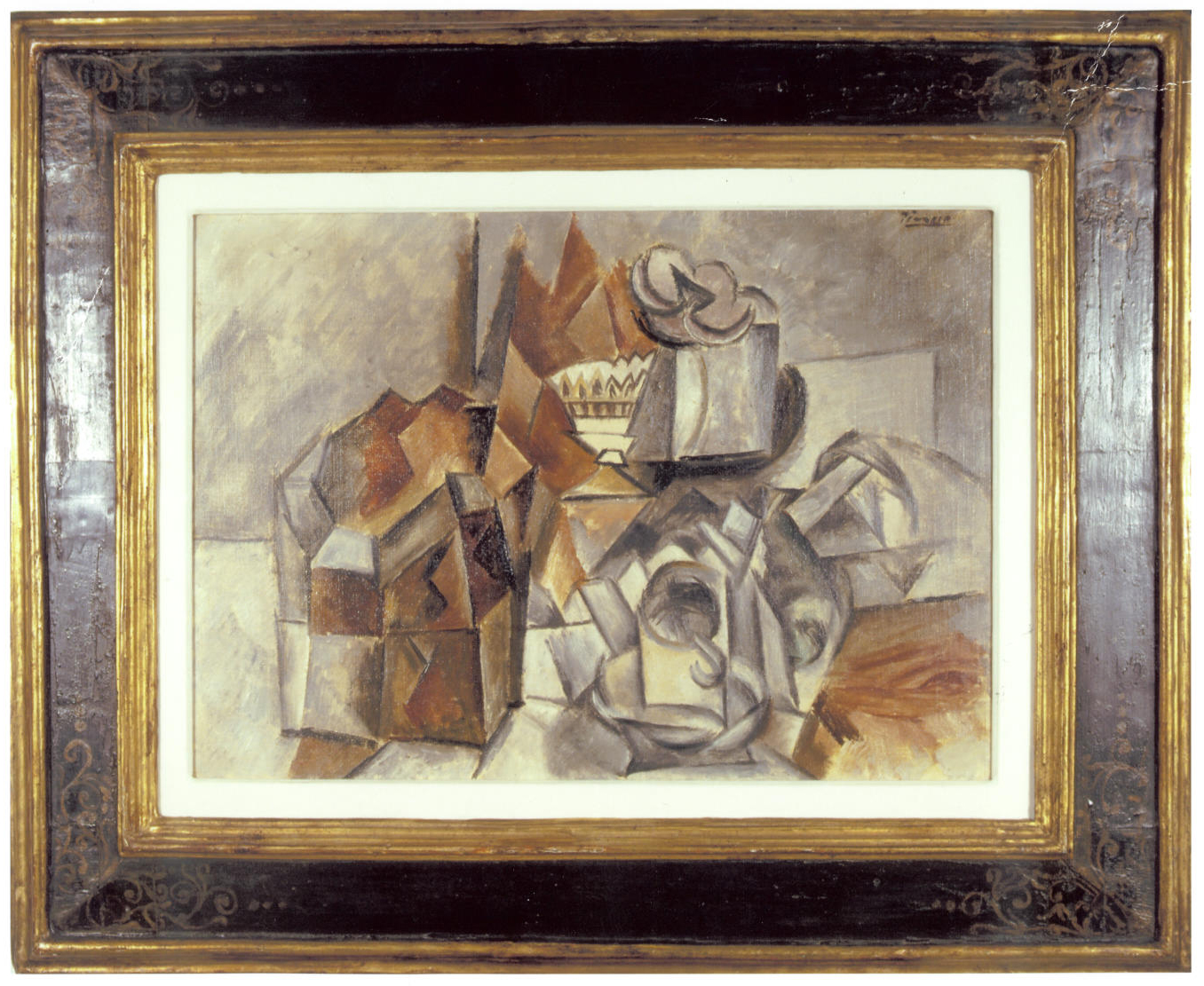
Earlier this morning while searching through my daily compilation of art news, I happened upon an article which mentioned “Compotier et tasse” from Picasso. Remembering the title, I searched my notes for the painting, where I had seen it and what the results were of my inquiries. The article states that the work was originally purchased by a couple, Angelo Maj and Gabriella Amati, using tax revenues from the city of Naples, Italy. It is reported that the couple embezzled approximately EURO 33M ($44M USD) using fraudulent service contracts, inflated expenses, fraudulent refunds and other schemes to defraud. Among their extravagant purchases with their embezzled funds was the 1909 Pablo Picasso painting, “Compotier et tasse”. Italy, rightfully wants it back. ICE, working with the United States Department of Justice “located and recovered the painting, which was being offered for private sale in the amount of $11.5 million.” Acting Assistant Attorney General Mythili Raman (USDOJ) states “Restraining this Picasso painting is yet another example of the Justice Department’s close partnership with law enforcement around the world. Our asset forfeiture section is committed to finding and securing every last penny of criminal proceeds and putting those ill-gotten proceeds back in the hands of victims, regardless of where they reside.”
I sincerely doubt that my young friend was embroiled in this controversy (First, because his pricing never could have gotten him in the door with a real buyer. Secondly, because I feel that he realized early on that this business is trickier than it first seemed to him, so he quit.) However, it is interesting how little due diligence and intellectual curiosity he conducted in a very complex field which he was a neophyte in. Would he have been involved, or worse yet, had I allowed myself to become involved in such a questionable property, our names could be side-by-side in this DOJ investigation. It took less than 1 hour of investigation on my part to rule out this work as a viable candidate for my client base. He apparently did not place the same importance on due diligence, and this time it could have really harmed him.
In college, one of our Art History professors once told his class on the first day, “95% of you will fail this course or drop it before it is over”. While many thought of Art History as a simple way to earn an arts credit, four people stood, turned and walked out immediately. They were the smart ones. Art is NOT an easy field and navigating it as a student, buyer, seller or a dealer is unlike any other career path in that you are dealing in something which is ostensibly unnecessary. Wants are sometimes more tightly scrutinized than needs are, and the intellectual and legal firepower qualified buyers employ cannot be overstated or ignored by those who ply this as their craft.
Perhaps my friend was one of the smart ones. As it takes a smart student to know when to get out before it is too late.
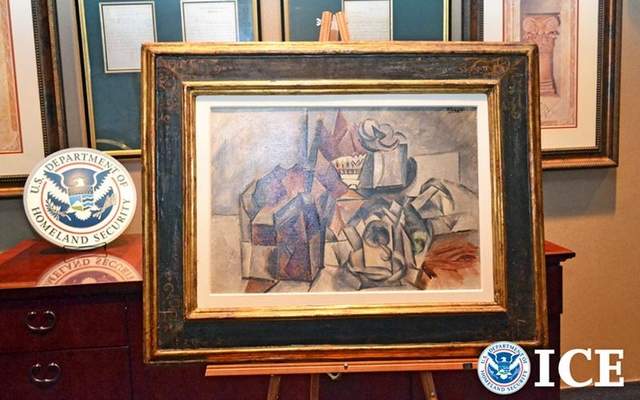
For information on this case see: http://www.justice.gov/opa/pr/2013/June/13-crm-706.html
Reed V. Horth, is the president, curator and writer for ROBIN RILE FINE ART in Miami, FL. He has been a private dealer, gallerist and blogger since 1996, specializing in 20th century and contemporary masters. www.robinrile.com
